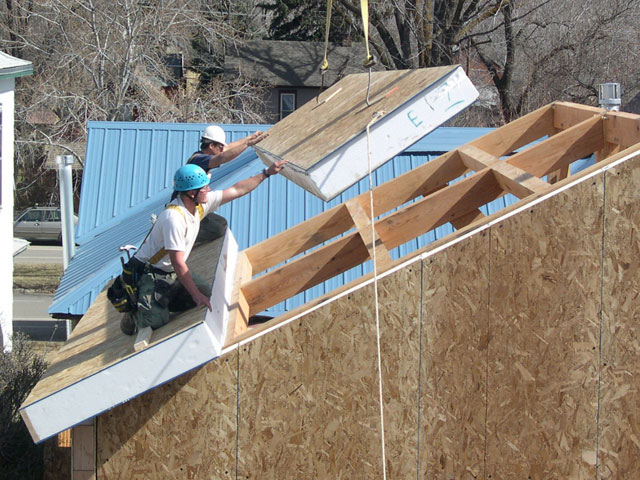

I think these problems are particular to areas where construction labor is generally "less expensive" (because there is a lot of it). There is no easier system for a roof deck. I've never built a structure than couldn't be completed in one day (or much less). In terms of "easier" - spray foam is dead easy. I specified Huber panels, but honestly you can get the same performance out of a combination panel with foam board and OSB, it's just not put together as well as Huber. It'd probably be in the same ballpark to do their R-6 panels. Even doing that, I had to have the Huber rep come out and we ended up correcting a some things. But I stuck to the R3 type panel as most contractors are familiar with it and can treat it like standard construction.
#Sip panels for roof zip
When I did build, I used a type of panel (Huber Zip system). I can tell you that this isn't remotely true in my area due to a lack of labor familiar with these panels. The industry sells these as "same cost" after considering labor, blah blah blah. The skillset is similar to building Ikea furniture and steel studded walls. The cost is similar to stick built, but the insulated values are off the charts, and there's almost no scraps left on the jobsite. Both make them for panelized homes as well as commercial uses. There's at least two nearby companies that do them. They build refrigerated buildings all the time, and those are totally prefab.

Now you can buy two metal sided, interlocking wall and roof panels for commercial structures. I imagine it's the old dog, new tricks thing that keeps them from widespread use. There is a complete new skillset to learn for installation. They added great rigidity to the bay windows. I tested it by walking along it like a bridge. I made one that was almost 13' long, and it had almost zero flex when we lifted it into position. Considering what they are made from, they made for amazingly strong panels. I made my own SIPs for the bay windows' reroofing job. The HVAC contractor said they've done a bunch of them and can easily downsize everything by 25% and still have more than enough extra ooomph so to speak. SIP panels consist of two sheets of OSB3 (oriented standard boards. His "review" I guess is what ultimately pushed us into doing a SIP home. Structural insulated panels (SIPs) are a modern and efficient method of construction, utilising off-site manufacture, and suitable for a variety of uses, ranging from small ancillary buildings through to residential, commercial, leisure and public sector construction projects.

First and second floor electrical goes into the floor system and back to the panel. He said the last one was super fast because all the chases needed were already there. My electrician has done a single SIP house and is excited to wire another one. There are well marked electrical chases built right into them. I'll post up some pictures of the walls when I get a chance. "Heat it with a fart powered candle" is what one guy said We talked with a few people that had built SIP homes and they all had nothing but high praise for the product. This is after day three with the same crew. Laying out all the treated bottom plates took longer than it seemed like it should but
#Sip panels for roof upgrade
It was roughly a $15,000 upgrade over a "regular" house. Thermocore panels carry a limited lifetime warranty against delamination.We decided to do SIPs on the house we plan to be in forever. Self-adhering polyurethane foam is injected between the skins to ensure a consistent, superior bond and structural integrity. All OSB is exterior-rated and is APA/Teco-rated for structural use Insulation CoreĢ.2 lb. Inner/Outer Skin: 7/16″ oriented strand board. Extremes pre-insulated SIPs offer an option for. Pre-engineered header and beam pockets are molded into panels. The high thermal values and strength properties of Extremes SIPs are highly beneficial for roof construction. They include pre-installed corners, door bucks, window bucks, subfacia and electrical conduit boxes. Panels are precisely custom-manufactured to drawings through a foam injection process in which the polyurethane bonds directly to the skins. Basic CompositionĮach panel is composed of a polyurethane insulation core with interior and exterior skins of oriented strand board. Because they are custom-manufactured, Thermocore panels allow extensive design freedom.

Designed to enclose timber frame structures, log structures and conventional buildings, this one-piece product is completely structural and can substitute for conventional framing in most applications. Thermocore Structural Insulated Panels are high-quality foam core panels suitable for exterior wall and roof systems in residential and commercial applications.


 0 kommentar(er)
0 kommentar(er)
